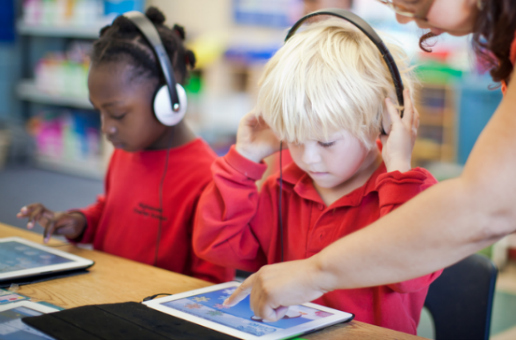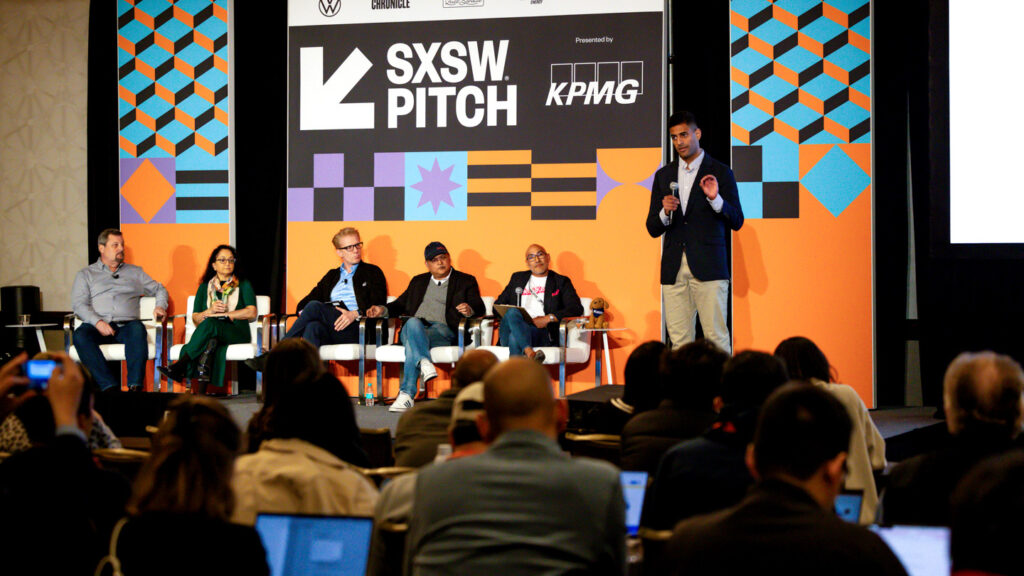 “Digital learning offers the best hope to ensure that more than 1/3 of our kids are college or career ready by [the time they graduate from] the 12th grade,” said former Florida Governor Jeb Bush in a panel discussion following a recent private screening of “Won’t Back Down” in Tampa held in conjunction with the 2012 Republican National Convention. John Bailey, the Executive Director of Digital Learning Now!, an initiative of Jeb Bush’s Foundation for Excellence in Education, envisions a not-too-distant future where students’ learning data—their grades, test scores, and curriculum details—will become data that they can easily take away from school and analyze for their own benefit. “Technology will unlock the power of the data that is currently stored within a school’s four walls. When students can start to use and analyze this data—their scholastic history—they will start to see new ideas in trends in how they work and how they learn,” Bailey said. He also projects that the influx of digital learning methods will have an “iTunes”-like effect on education. Rather than having to buy an entire album—in this case, a set of courses taught at her local school—a student will choose which classroom instruction options and digitally-delivered exercises best fit and complement her unique learning style. And, critically, she will be empowered to assemble the best possible program for herself. This concept of a la carte, or networked learning, is already being widely applied from the hobbyist to the collegiate level, from the Khan Academy to the increasing number of free college-level courses that universities such as Stanford and MIT are broadcasting, free of charge, on the web. Kindergarten through 12-grade education is the next logical step for this trend. The concept of “networked learning” was echoed by serial education entrepreneur John Katzmen, founder of The Princeton Review, 2Tor, and Noodle, at a “future of education” panel hosted by Democrats For Education Reform at the 2012 Democratic National Convention in Charlotte. Katzmen described a future where students are not just restricted to a single school in their city, but rather a new construct where students could access technology-enabled instruction best suited for their personal learning style. “Instead of districts as they are configured now… imagine networks of schools where parents and students would have a choice” to pursue specific learning activities. “The notion of one-size-fits-all education… that we know what [a student] needs to know to be successful in the economy 18 years from now is ridiculous.” Katzmen cited KIPP (the Knowledge is Power Program) as one such network with the potential to change the status quo. While KIPP may only operate a few schools in a given region, its national network numbers more than 125 schools. KIPP could eventually give its students access to the best customizable learning across their entire network.
“Digital learning offers the best hope to ensure that more than 1/3 of our kids are college or career ready by [the time they graduate from] the 12th grade,” said former Florida Governor Jeb Bush in a panel discussion following a recent private screening of “Won’t Back Down” in Tampa held in conjunction with the 2012 Republican National Convention. John Bailey, the Executive Director of Digital Learning Now!, an initiative of Jeb Bush’s Foundation for Excellence in Education, envisions a not-too-distant future where students’ learning data—their grades, test scores, and curriculum details—will become data that they can easily take away from school and analyze for their own benefit. “Technology will unlock the power of the data that is currently stored within a school’s four walls. When students can start to use and analyze this data—their scholastic history—they will start to see new ideas in trends in how they work and how they learn,” Bailey said. He also projects that the influx of digital learning methods will have an “iTunes”-like effect on education. Rather than having to buy an entire album—in this case, a set of courses taught at her local school—a student will choose which classroom instruction options and digitally-delivered exercises best fit and complement her unique learning style. And, critically, she will be empowered to assemble the best possible program for herself. This concept of a la carte, or networked learning, is already being widely applied from the hobbyist to the collegiate level, from the Khan Academy to the increasing number of free college-level courses that universities such as Stanford and MIT are broadcasting, free of charge, on the web. Kindergarten through 12-grade education is the next logical step for this trend. The concept of “networked learning” was echoed by serial education entrepreneur John Katzmen, founder of The Princeton Review, 2Tor, and Noodle, at a “future of education” panel hosted by Democrats For Education Reform at the 2012 Democratic National Convention in Charlotte. Katzmen described a future where students are not just restricted to a single school in their city, but rather a new construct where students could access technology-enabled instruction best suited for their personal learning style. “Instead of districts as they are configured now… imagine networks of schools where parents and students would have a choice” to pursue specific learning activities. “The notion of one-size-fits-all education… that we know what [a student] needs to know to be successful in the economy 18 years from now is ridiculous.” Katzmen cited KIPP (the Knowledge is Power Program) as one such network with the potential to change the status quo. While KIPP may only operate a few schools in a given region, its national network numbers more than 125 schools. KIPP could eventually give its students access to the best customizable learning across their entire network.
Startups Filling in the Gap
MentorMob, a Chicago-based startup business, is facilitating a web-based system of “networked learning” through digital learning playlists. MentorMob exemplifies the potential of what networked learning can have in a classroom. Rather than assume that one school—or in MentorMob’s case, one teacher who uploads a video on how to, say, multiply fractions—is gospel on how to do something well, why not allow the universe of content into consideration to determine what the best combination of factors is to improve learning? “We have teachers co-teaching with MentorMob Learning Playlists 2,500 miles apart from one another! Not only is content being organized and brought together in the Learning Playlists, but so are communities around learning topics,” Kristin Demidovich, MentorMob’s Chief Marketing Officer, and Vince Leung, Chief Operating Officer, offered in an email interview. The teacher’s unions, sometimes at odds with the education reform advocates, also recognize how digital learning methods will impact classroom instruction. Randy Weingarten, the President of the American Federation of Teachers, a 1.5 member strong union, reiterated the view about the need to introduce “blended learning,” a combination of direct and digital learning. Weingarten spoke on the same panel as Katzmen at the DNC. “We need to think about all of the services that children need…How can we use technology as not supplanting, but supplementing and differentiating instruction and going deeply so you can actually value the work that the teachers have to do,” Weingarten said. The ubiquity of new technological tools will continue to hasten change within schools. “We’re at a pivotal moment in the movement. I see parallels to when the “cleantech” movement started to take-off,” Bailey said. The students of today, who are deeply impacted by digital media and digital tools, will become the teachers and administrators of tomorrow. “15 years from now, digital media and devices will be more mainstream as the teachers and administrators of the schools will be at the age where they have grown up with the Internet and instant access to information. Only then will the decision makers at the top fully understand the benefits of digital learning. Then more of these non-standard learning methods, such as flipped learning, differentiated learning, and project-based learning will be enabled. From there, the sky’s the limit,” Demidovich and Leung said. But for startups such as MentorMob or 2Tor, waiting for 2027 is not an option. They feel the imperative to use technology to impact students’ learning outcomes today, doing their part to increase the number of college or career ready students who are graduating high school. Image courtesy of Cisco.









